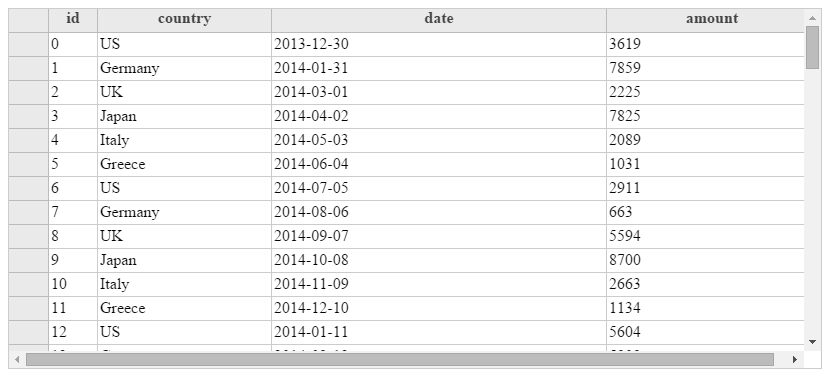

- #Dplyr summarize all columns how to#
- #Dplyr summarize all columns software#
- #Dplyr summarize all columns professional#
The summary() function, while less flexible, also accomplishes the task of calculating means alongside several other summary statistics, and it is more concise. Our usage of summarize() so far mirrors that of apply(). For now, we can just use everything() to apply the function to all of the columns. across() accepts select() syntax, so we can use the functions reviewed in the section on Subsetting by Columns. Summarize() can also be used in conjunction with across() to apply a function to multiple variables. Examples include calculating the total income by family or the mean test score by state. 20.3.8 Limiting higher order interactionsĪggregation is the process of turning many datapoints into fewer datapoints, typically in the form of summary statistics.18.2 Adding Group-Level Information without Removing Rows.12.2.3 Name prefix, other name wildcards.8.4 Incrementing and Decrementing Dates.Deep Learning with R by François Chollet & J.J.An Introduction to Statistical Learning: with Applications in R by Gareth James et al.Hands-On Programming with R: Write Your Own Functions And Simulations by Garrett Grolemund & Hadley Wickham.Practical Statistics for Data Scientists: 50 Essential Concepts by Peter Bruce & Andrew Bruce.Hands-On Machine Learning with Scikit-Learn, Keras, and TensorFlow: Concepts, Tools, and Techniques to Build Intelligent Systems by Aurelien Géron.R for Data Science: Import, Tidy, Transform, Visualize, and Model Data by Hadley Wickham & Garrett Grolemund.Inter-Rater Reliability Essentials: Practical Guide in R by A.Practical Statistics in R for Comparing Groups: Numerical Variables by A.Network Analysis and Visualization in R by A.GGPlot2 Essentials for Great Data Visualization in R by A.R Graphics Essentials for Great Data Visualization by A.Machine Learning Essentials: Practical Guide in R by A.Practical Guide To Principal Component Methods in R by A.Practical Guide to Cluster Analysis in R by A.Psychological First Aid by Johns Hopkins University.Excel Skills for Business by Macquarie University.Introduction to Psychology by Yale University.

#Dplyr summarize all columns professional#
IBM Data Science Professional Certificate by IBM.Python for Everybody by University of Michigan.Google IT Support Professional by Google.The Science of Well-Being by Yale University.AWS Fundamentals by Amazon Web Services.Epidemiology in Public Health Practice by Johns Hopkins University.Google IT Automation with Python by Google.Specialization: Genomic Data Science by Johns Hopkins University.
#Dplyr summarize all columns software#
Specialization: Software Development in R by Johns Hopkins University.Specialization: Statistics with R by Duke University.Specialization: Master Machine Learning Fundamentals by University of Washington.Courses: Build Skills for a Top Job in any Industry by Coursera.Specialization: Python for Everybody by University of Michigan.Specialization: Data Science by Johns Hopkins University.Course: Machine Learning: Master the Fundamentals by Standford.The simplified syntax is as follow: gather_(data, key_col, value_col, gather_cols)Ĭoursera - Online Courses and Specialization Data science You should use the function gather_() which takes character vectors, containing column names, instead of unquoted column names
#Dplyr summarize all columns how to#

Their values have been put into a value column (here “arrest_estimate”).

Note that, all column names (except state) have been collapsed into a single key column (here “arrest_attribute”). My_data2 state arrest_attribute arrest_estimate


 0 kommentar(er)
0 kommentar(er)
